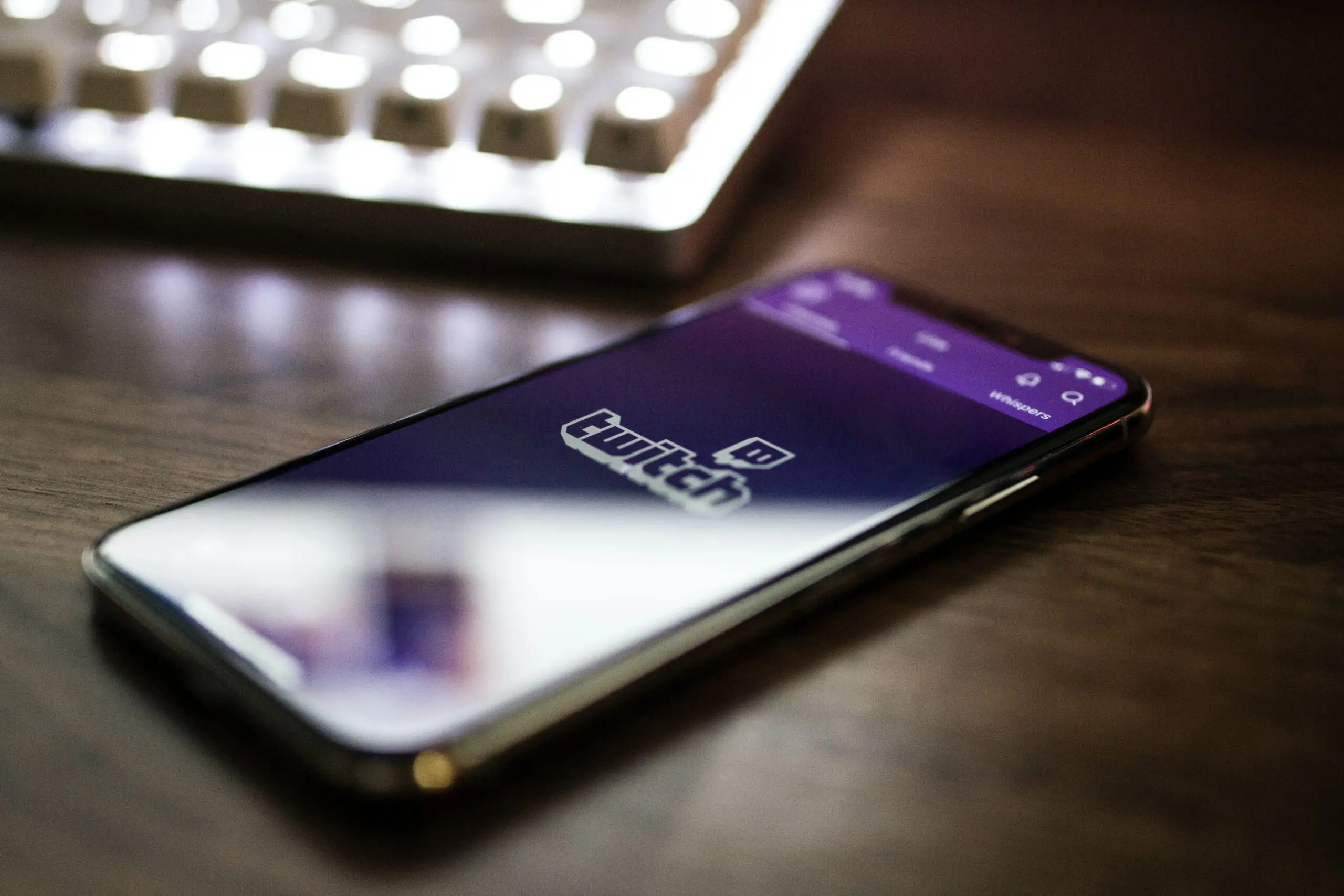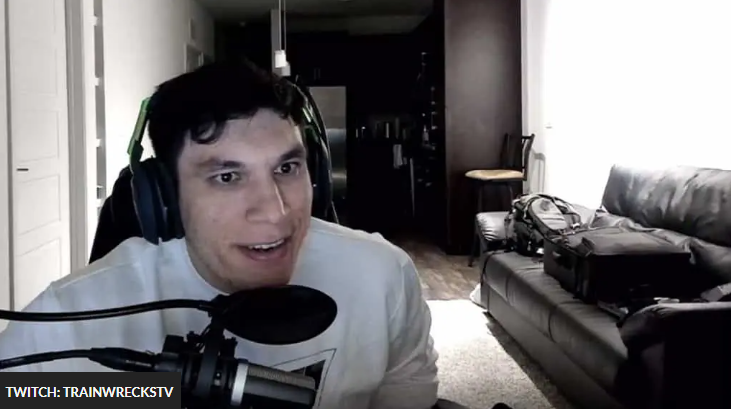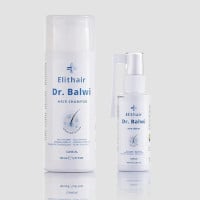
Are Streamers More Prone to Hair Loss?
Streaming on platforms like Twitch and YouTube Gaming has become immensely popular over the last few years. As of 2024, Twitch was reporting a staggering 240 million active users monthly, meanwhile YouTube Gaming boasted 6 billion views in the same year.
The interactive and often candid relationship between streamers and their audiences means that nothing is off the table when it comes to chat topics, and that includes hair loss. Here, we’ll be analysing why streamers may be more likely to lose their hair and look at some recent examples.
What Could Contribute to Streamer Hair Loss?

Insomnia
In many walks of life, long periods of screentime is unavoidable. This is certainly the case for those, like streamers, who make their livelihoods in front of a computer screen. However, extended screen time can have a variety of detrimental effects on our health, which in turn can negatively impact hair health.
For some time now, the leading culprit was thought to be blue light emissions. The prevailing theory was that the light of computer and smartphone screens disrupts the body’s production of melatonin, which can disrupt sleep and even lead to insomnia. However, there have since been studies that suggest this is a greater issue for children than it is for adults.
There have, however, been many studies linking hair loss and insomnia, in particular how there appears to be a comorbidity between alopecia areata and sleep issues. Studies suggest that people already suffering from autoimmune hair loss might already be susceptible to disrupted sleep, which further exacerbates the rate of their hair loss as exhaustion places stress on the body.
Whether as a result of too much screentime, streaming late into the night, or simply the stresses of working in a public-facing role, there are many factors that could prevent streamers from getting a good night’s rest, thus putting the health and longevity of their hair at risk.
Stress
As we’ve already touched upon above, another short term cause of hair loss which streamers may be prone to is stress. Hair loss as a direct result of stress is also known as telogen effluvium and usually presents itself 3 months after an inciting incident. The stress of streaming for long periods of time and needing to ensure your income through subscriptions and views could, therefore, lead to hair loss.
For many, the hair loss can come as a surprise, as it occurs so long after the inciting incident. Thankfully, once the initial period of stress has subsided, the hair will typically regrow without any medical intervention within 6-12 months. However, this is only the case if all stressors have been mitigated. Sustained stress can prolong hair loss.
Nutrient Deficiencies
The average Twitch stream can last anywhere from 3 to 6 hours. As a result of such long streaming sessions, paired with the need to be “on” and delivering high energy interactions with their audiences, there is often an inevitable negative impact on lifestyle and diet.
Due to the nature of their work, streamers may be inside for long periods of time, which can lead to vitamin D deficiencies from lack of exposure to the sun. Minerals like zinc and iron are also vital for hair health, which makes their inclusion in a healthy diet crucial. Diet can be affected if long streams do not allow for the preparation and consumption of nutritious meals, and if streamers instead rely on energy drinks to stay alert.
Nutrient deficiencies can result in hair loss as the body is forced to prioritise vital functions. Hair loss due to nutrient deficiency is temporary and also falls under the umbrella of telogen effluvium. It can be counteracted by ensuring your body is receiving adequate nutrition from a balanced diet.
Streamers Experiencing Hair Loss
Given the contributing factors listed above, it should not be surprising when streamers experience hair loss. Due to the personality-driven nature of the job, and the access audiences have to their favourite streamers, speculation about and examples of hair loss in streamers abound.
While it might be distressing for some popular streamers to discuss the prospect of balding, it does present them with an important opportunity to tackle the stigma surrounding these issues among younger people and start an open dialogue. Here, we’ve highlighted some streamers whose hair loss experiences and rumours set their chats ablaze.
Mizkif – Hair Transplant
Streamer Matthew Rinaudo, who streams under the username Mizkif, revealed on stream that he noticed he was losing a lot of hair. This revelation soon snowballed into a preoccupation with the streamer’s hair loss, by both his audience and Rinaudo himself. While people typically lose 50–100 hairs a day, the streamer reported that just from running his hand through his hair, he could count about 30 hairs falling out. What’s more, he said there was further shedding he was noticing in the shower and the number of hairs seems to be cause for concern.
Rinaudo later revealed on another stream that he had been using Olaplex shampoo for two years, and his audience were quick to respond with links to studies drawing a connection between use of the product and hair loss. While it is uncertain whether Mizkif’s hair loss stemmed directly from use of the shampoo, or if his hair loss was an unavoidable case of androgenetic alopecia, it was clear that he had to take action.
Treatment
In 2024, Mizkif received hair transplant surgery at the Barber Surgeons Guild in New York City. He vlogged the entire process on his Youtube Channel, receiving praise in the comments for how down-to-earth and open he was in revealing his experience.
Mizkif’s hair transplant was carried out using FUE and DHI techniques, the same techniques used by Elithair. In the vlog, Mizkif expresses suprise and relief that the procedure and recovery period were so painless.
Trainwreckstv – Traction Alopecia

Twitch streamer Tyler Faraz Nikam, known professionally as Trainwreckstv, inadvertently attracted the teasing of his audience when, in 2021, his bald spot became visible mid-stream. The spot, which until that point had been concealed beneath the band of his headphones, took both Nikam and his viewers by surprise.
It is believed that Nikam was suffering from a form of hair loss known as traction alopecia. This type of hair loss is caused by persistent pulling on the hair, causing tension between the strand and the root. It’s most often seen in women and men who wear tight hairstyles, but the persistent and extended use of headphones may also contribute to this type of hair loss.
Treatment
While it is possible that the bald spot is the result of hereditary hair loss, the appearance of the concentrated bald spot with no thinning or receding hair surrounding it makes it more likely that it is a less severe, reversible form of hair loss like traction alopecia. As Nikam reports, he decided to start taking topical hair growth product Rogaine in order to combat the bald spot.
Conclusion
The openness of these streamers in talking about their hair loss is a great indication of the normalisation of speaking on these issues. There can be a variety of causes of hair loss for those in the streaming community, and their candour in talking about the topic can help others to face their own hair loss and find an effective solution.
Are you suffering from hair loss and looking for a permanent solution? Contact one of our experts today in order to find out how you can get a hair transplant, so you can leave your hair loss worries behind.
FAQs
How does prolonged screen time contribute to insomnia for streamers?
Prolonged screen time can lead to mental overstimulation, making it harder for streamers to wind down before bed. Additionally, the physical strain from long hours of sitting and focusing on screens can exacerbate tension and disrupt the natural circadian rhythm, further impacting sleep quality.
What dietary changes can streamers make to counteract nutrient deficiencies?
Streamers can incorporate foods rich in vitamin D (like salmon, fortified cereals, and egg yolks), iron (such as lean red meat, spinach, and lentils), and zinc (found in shellfish, nuts, and seeds). Meal prepping and having healthy snacks like fruit, nuts, or yogurt during streams can also help maintain a balanced diet.
How can you reduce the risk of traction alopecia when wearing headphones?
Streamers can reduce the risk of traction alopecia by using lighter, adjustable headphones that minimise pressure on the scalp, alternating between different styles of headphones, and taking regular breaks to relieve tension. Padding or protective headbands can also help distribute pressure more evenly.
Why is telogen effluvium often mistaken for permanent hair loss?
Telogen effluvium is often mistaken for permanent hair loss because it can result in significant shedding over a short period. The delayed onset of hair loss after the triggering event also makes it harder to link the cause, leading to misconceptions about the condition’s temporary nature.
What factors should be considered when deciding on a hair loss treatment or transplant?
Streamers should consider the underlying cause of their hair loss (genetic, stress-related, or lifestyle-induced), the severity of their condition, their budget, and the downtime required for recovery. Consulting with a hair specialist to determine the most appropriate treatment is essential.
Are there any proactive measures to prevent stress-induced hair loss?
Streamers can prevent stress-induced hair loss by implementing stress management techniques such as regular exercise, mindfulness practices, setting clear work boundaries, and scheduling time for hobbies or social activities outside of streaming.
How can streamers educate themselves about the long-term effects of using certain hair products?
Streamers can research product reviews, check for scientific studies on ingredients, and consult with dermatologists or trichologists for advice on hair care. Monitoring changes in hair health after introducing new products is also crucial for early identification of adverse effects.
What signs help to identify whether hair loss is reversible or requires professional intervention?
Streamers should look for sudden, patchy hair loss (often reversible) or gradual thinning and receding hairlines, which might indicate genetic or chronic conditions. Persistent shedding, scalp irritation, or no improvement after lifestyle changes warrant professional consultation.
How can young people benefit from discussing hair loss openly?
Younger streamers can benefit by reducing the stigma surrounding hair loss, fostering a supportive community, and gaining access to advice and resources early. This openness encourages proactive management and normalises seeking treatments if needed.


